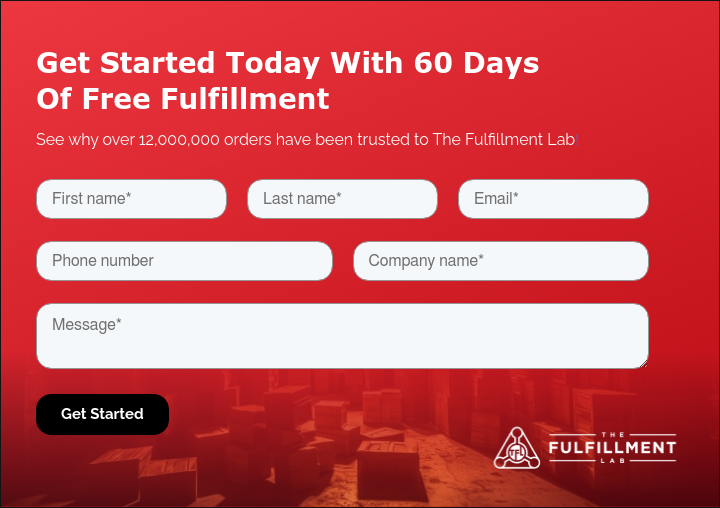What Is Product Allocation & How Can It Benefit Fulfillment?
During the oil crisis of the early 1970s, the demand for gas outweighed supply, resulting in odd-even rationing (if the last digit on your license plate was odd, you could get gas only on odd-numbered days). More recently, the COVID-19 pandemic led to stores putting limits on how much toilet paper and hand sanitizer customers could buy in order to fairly distribute product to everyone who needed it.
These are just a couple of examples highlighting the importance of product allocation planning. For eCommerce companies, product allocation planning can help maintain proper inventory levels to meet demand. So, let’s dive into various product allocation strategies and look at product allocation benefits.
What Is Product Allocation?
Product Allocation is a strategic inventory method used when the quantity of products available for purchase is limited. Properly allocating products requires distributing, tracking, and managing eCommerce inventory across your distribution network and sales channels to meet customer demand as best as possible. This helps ensure the right amount of supply is being allocated to the right customers at the right time.
Although manual product allocation is possible for small eCommerce companies, most of today’s online retailers allocate products by using inventory tracking technology. This helps save time, eliminate human error, and improve supply chain efficiency. It’s especially valuable for sellers that maintain inventory in multiple locations or sell across different channels. They also engage in demand forecasting, projecting future sales by using historical sales data to make informed inventory planning decisions that can reduce the need for product allocation.
Product Allocation Strategies
Product availability is important to both eCommerce retailers and their customers. So, when it comes to allocation strategies, most eCommerce companies choose equal allocation, trend allocation, or seasonal allocation.
Equal Allocation
Also known as universal allocation, this product allocation approach distributes your entire product line evenly across your distribution network, giving each distribution center an equal about of every in-stock SKU. If you also run brick-and-mortar shops, you’ll want to keep the same amount of inventory allocated for virtual sales at each physical store location.
Trend Allocation
As the name implies, trend allocation distributes inventory based upon which products are trending where. For example, fitness trends tend to start in California. If you’re selling wellness products, you may consider splitting inventory across multiple fulfillment centers but keeping the bulk of it near the West Coast.
Seasonal Allocation
Similar to trend allocation, a seasonal allocation strategy houses inventory in locations based on weather conditions. For example, if you sell sweaters you may choose to store the bulk of your inventory in the midwest or East Coast; if you’re selling swimwear, you might keep the majority of your stock in the Sunshine State.

Six Benefits of Product Allocation Planning
Product allocation planning can benefit eCommerce companies (and those with brick-and-mortar stores too) in a number of ways. Here are our top six benefits of having a solid product allocation plan.
1. Managing Inventory Allocation
A good product allocation process helps you decide where to store inventory across your eCommerce supply chain based on demand. By following one of the product allocation strategies we just discussed, you can save on inventory storage costs by optimizing inventory levels without overstocking in different locations. You’ll also avoid stocking too little, resulting in stock outs and backorders that can hurt your bottom line and your reputation.
2. Reducing Inventory Waste
Inventory can go to waste, becoming unsellable “dead stock” if there’s low demand near the location in which it is stored. This can also result in areas where there is high demand being shortchanged. Effective product allocation helps ensure that you have the right levels of stock in the right place at the right time.
3. Gaining a Better Understanding of Customer Behavior
As mentioned earlier, many eCommerce business owners allocate products based on forecasting, which requires keeping track of historical order data. In doing so, you can gain insights into your customers’ buying behaviors, such as which times of the year they’re most likely to purchase your products, which products are more popular than others, how much they purchase at once, how likely they are to return a product, and so on. All of these behaviors can help you make better decisions on how much inventory to keep and where to keep it.
4. Reducing Shipping Spend and Transit Times
When inventory is stored far away from its destination, shipping costs increase because the product has to cross more shipping zones. The more zones, the more you'll pay. Of course, the further a product has to travel, the longer it will take to get where it's going which can also frustrate customers (of course, you can always pay for expedited or overnight shipping, but that also eats into your profits).
5. Improving the Customer Experience
Customer experience, or CX, is the impression customers get from a company as they move throughout their buyers’ journey. This journey includes every interaction with your company, including the ordering process. Stock-outs, backorders, and shipping delays due to lack of inventory result in a poor CX. By properly allocating products, however, you can deliver a superior customer experience. That’s a win-win, as customers say they’re five times more likely to re-purchase following a good CX and four times more likely to recommend the company to someone else.
6. Optimizing Store Allocation
You always inventory available at locations closest to your customers to reduce shipping costs and transit times (today’s customers expect fast delivery). If you operate an online store and a brick-and-mortar store, you’ll also want to use historical data to see where most of your sales come from. For example, if you sell candles and have 500 in stock and 75% of your sales are in-store, you’ll want to set aside 375 for the physical store and reserve the remaining 125 for online orders. Of course, keep in mind that this may change over time, or really quickly; during COVID, many businesses saw an increase in online sales and a decrease in in-store sales.
Improving Product Allocation with Third-Party Logistics
Product allocation has an effect on how quickly you can ship products to customers which, again, is why inventory location is key. However, you may not have a location close to your customers, especially if a lot of your orders are coming from overseas. To create a robust product allocation plan that lowers logistics costs and improves last-mile delivery, you may want to consider a third-party logistics (3PL) partner like The Fulfillment Lab.
With TFL, you’ll have access to our 14 domestic and international locations and your own client portal through our Global Fulfillment Software™ which allows you to track your inventory in real-time across your network from one dashboard. You’ll also gain access to advanced analytics providing insight into your customers’ shopping patterns which can be used to develop a better product allocation strategy. We’re also the creators of fulfillment marketing, which provides unique packaging customization options to grow brand awareness and further your CX. Contact us today to learn more or get started!



